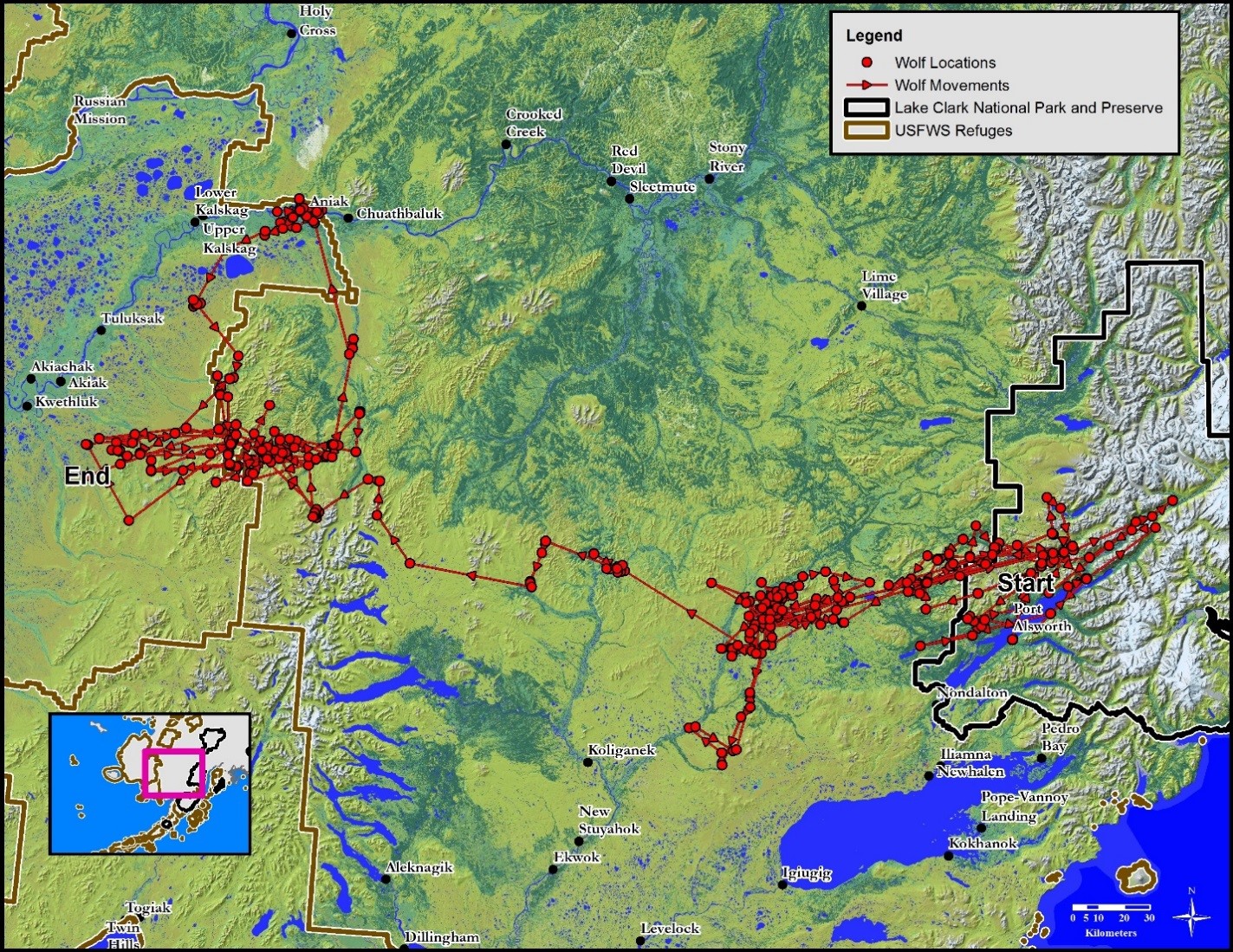News Release
You are viewing ARCHIVED content published online before January 20, 2025.
Please note that this content is NOT UPDATED, and links may not work. For current information,
visit https://www.nps.gov/aboutus/news/index.htm.

NPS Map
|
Subscribe
|
Contact: Buck Mangipane, Chief of Natural Resources, (907) 717-3317
Port Alsworth, AK – A new study shows wolves in Southwest Alaska are using a diversity of food resources to meet their dietary needs, including a high use of salmon and salmon carcasses. The study was published in the August 2017 issue of Canadian Journal of Zoology. The study also found a possible increase in wolf pack stability in packs making regular use of salmon as a food resource.Wolves play an important role in the wildlife dynamics of Lake Clark National Park and Preserve and are highly sought by both park visitors and local trappers and hunters. As apex predators, wolves impact natural systems which have adapted to and evolved in the presence of wolves. The study helped biologists increase their knowledge of local pack size and large range for hunting of prey.
Beginning in 2008, biologists radio-collared wolves to understand population dynamics and foraging ecology among the diverse ecosystems in Lake Clark National Park and Preserve. Over a five year period, park biologists captured 22 wolves from six packs in Lake Clark, collected biological samples, took physical measurements, and fit the captured wolves with GPS radio collars capable of recording daily locations accurate to within 100 feet. This daily tracking provides a much more detailed understanding of wolf movements than was gathered with typical aerial tracking efforts of the past. One lone female yearling wolf traveled at least 234 miles, circumnavigating Iliamna Lake and returning to her original position over 17 days.
Wolves are generally associated with large terrestrial prey, but part of this project was to determine if salmon, a prey not generally associated with wolves, were used in Lake Clark. The study results showed substantial variability in the use of salmon over time. During summer, diets of five wolves consisted of at least 50% salmon, while the diets of 17 wolves consisted of primarily terrestrial prey. Over 3 years, one group of wolves consistently consumed salmon in summer and switched to terrestrial prey in winter. This use of salmon is likely widespread, though infrequently documented, among wolves that live where salmon is abundant.
The National Park Service partnered with the University of Alaska – Anchorage and the Environmental and Natural Resources Institute on this study. The published study can be found on the NPS Intergrated Resource Management Portal.
---
Full picture caption: Wolves from Lake Clark have been documented traveling as far as 157 miles in search of a new territory. Most young adult wolves leave the pack they were born into, seeking a mate of their own. Because wolf packs defend their territory against other wolves, those who leave must find a territory not already in use by other packs.
Last updated: November 8, 2017
